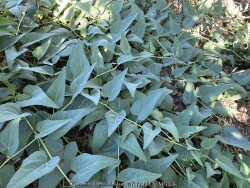
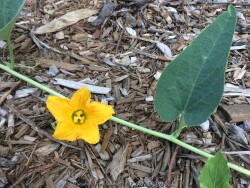
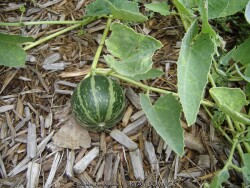
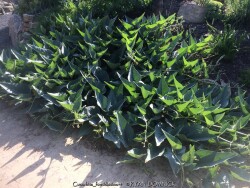
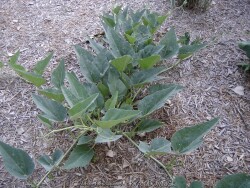
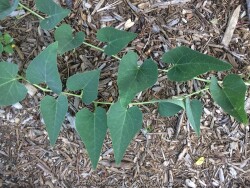



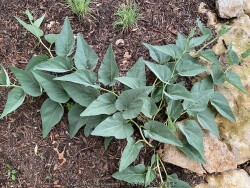
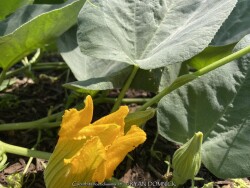

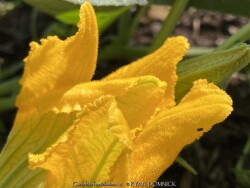
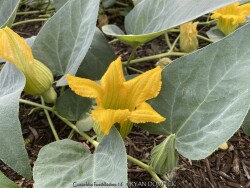
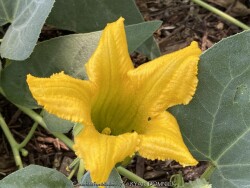
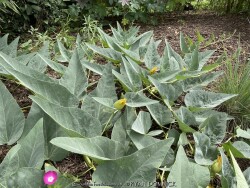
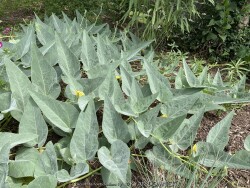

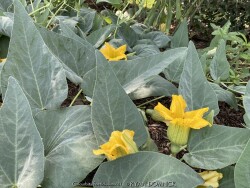

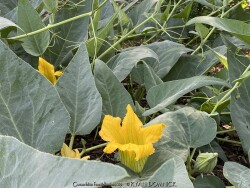
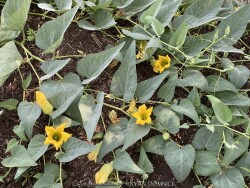


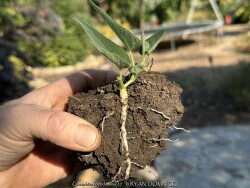
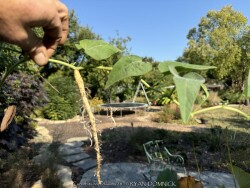
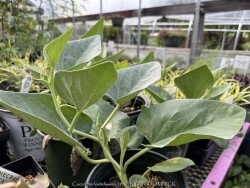
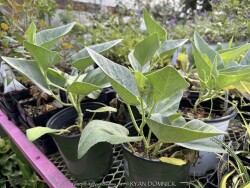
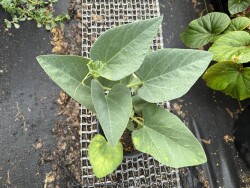
Plant Min Zone: 4a
Plant Max Zone: 8a
Sunlight: All Day Full Sun, Full Sun
Water / Rainfall: Very Low, Low, Average
Soil Quality: Poor, Average
Bloom Season: Summer, Late Summer
Flower Color: Orangish Yellow
Berry / Fruit Color: Green
Spring Foliage Color: Bluish Green
Summer Foliage Color: Bluish Green
Fall Foliage Color: Bluish Green
Evergreen Foliage: No
Winter Interest: No
Scented Flowers: No
Drought Tolerance: High
Wet-Feet Tolerance: Low
Humidity Tolerance: Low, Medium
Wind Tolerance: High
Poor Soil Tolerance: Rocky Soils, Sandy Soils, Alkaline Soils (high PH)
Height: 0.75' - 1'
Width: 3' - 6'
Growth Rate: Medium, Fast
Service Life: Long: 5-10 years
Maintenance Need: Low
Spreading Potential: High
Yearly Trimming Tips: Trim Perennial to Ground Around First Fall Freeze: No Winter Interest.
Plant Grouping Size: Specimen Planting of 1-3
Best Side of House: South Exposure, West Exposure
Extreme Planting Locations: Survives Severe Drought, Tolerates Extreme Heat, Top of Retaining Wall Locations, Resistant to Rabbits
Ornamental Features: Multiple Seasons of Interest, Exceptional / Colorful Foliage
Special Landscape Uses: Groundcover
Possible Pest Problems: Root Rot Disease
Plant Limitations: Sometimes Mistaken as Weed, Needs Excellent Drainage, May be Poisonous, Late to Emerge or Leaf Out in Spring
Shippable in 2026: YES
Buffalo Gourd (Cucurbita foetidissima) has large, gray-green, triangular leaves growing along long, prostrate stems. In the wild, the plants are often 20-30 feet across. Leaves are an attractive bluish green with a sandpapery texture. The large, bell-like flowers, 2-4 inches long, are yellow to orange, opening for only a day but blooming occurs over a month or so. The globular fruits, about 4 inches across, are green-striped when young, maturing to tennis-ball size and turning yellow. The plant supposedly gets the name "stink gourd" from its foul odor. Native to arid clay soils in Western Kansas, Colorado, the southwestern United States, and northern Mexico, the plant forms a fleshy tap root which is used to store water and nutrients. A large 10' wide specimen has flourished in our display garden in Lawrence, KS for over 10 years. It is planted in full sun in clay soil with no extra irrigation. It survived -16 degrees F and a week of single digit highs in February, 2021. It would be very useful as a vine-like perennial cascading over the top of a retaining wall! Amazing that a perennial native to areas receiving 5-10" of rain per year can grow in a climate receiving 5-10 times more rain!